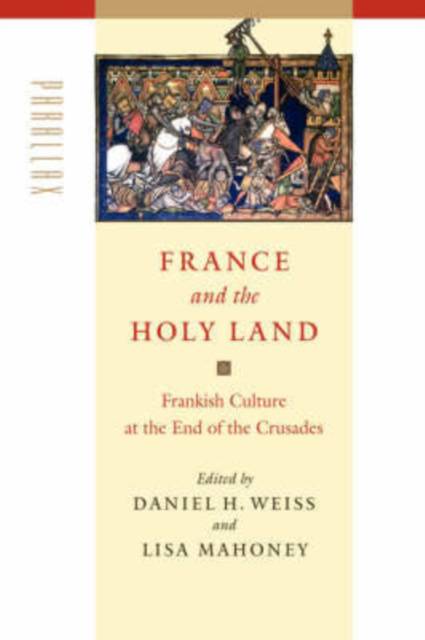
- Retrait gratuit dans votre magasin Club
- 7.000.000 titres dans notre catalogue
- Payer en toute sécurité
- Toujours un magasin près de chez vous
- Retrait gratuit dans votre magasin Club
- 7.000.0000 titres dans notre catalogue
- Payer en toute sécurité
- Toujours un magasin près de chez vous
France and the Holy Land
Frankish Culture at the End of the Crusades
Description
During the First Crusade launched in 1095, thousands of Europeans fought to liberate Jerusalem from the Seljuk Turks. By 1099, they had succeeded, and in the decades that followed, Franks settled in the newly conquered territory, creating a rich intellectual and cultural life. They wrote poetry and histories of their experiences, erected churches and castles, and commissioned illuminated manuscripts, frescoes, sculpture, and more. The majority of the crusaders and settlers were French, so the art and culture of France were of abiding importance to them. But the settlers did not merely transfer French artistic forms to the Levant; they also incorporated ideas and images from Byzantine and Islamic neighbors.
In France and the Holy Land, Daniel H. Weiss and Lisa Mahoney bring together leading scholars from a variety of disciplines to shed light on the many aspects of this Frankish crusader culture. The authors examine the art, poetry, and architecture of crusader Paris, look at the imprint the Frankish settlers left on the Levant, and explore cultural exchange between the Franks and both Byzantines and Muslims.
Although the crusaders' struggle to hold the occupied lands was ultimately futile, their stay in the Levant produced a unique and fascinating intellectual and cultural flowering that was neither Western nor Middle Eastern, but a distinctive melange of both. These thoughtful, provocative essays from prominent medievalists profoundly broaden and deepen our understanding of this significant historical period.
Contributors: Annemarie Weyl Carr, Southern Methodist University; Rebecca W. Corrie, Bates College; Anthony Cutler, Pennsylvania State University; Anne Derbes, Hood College; Jaroslav Folda, University of North Carolina, Chapel Hill; David Jacoby, Hebrew University, Jerusalem; Bianca Kühnel, Hebrew University, Jerusalem; Gustav Kühnel, Tel Aviv University; Stephen G. Nichols, The Johns Hopkins University; Robert Ousterhout, University of Illinois, Urbana-Champaign; Scott Redford, Georgetown University; Jonathan Riley-Smith, University of Cambridge; Mark Sandona, Hood College
Spécifications
Parties prenantes
- Editeur:
Contenu
- Nombre de pages :
- 400
- Langue:
- Anglais
- Collection :
Caractéristiques
- EAN:
- 9780801878237
- Date de parution :
- 14-05-04
- Format:
- Livre relié
- Format numérique:
- Genaaid
- Dimensions :
- 157 mm x 230 mm
- Poids :
- 730 g

Les avis
Nous publions uniquement les avis qui respectent les conditions requises. Consultez nos conditions pour les avis.





